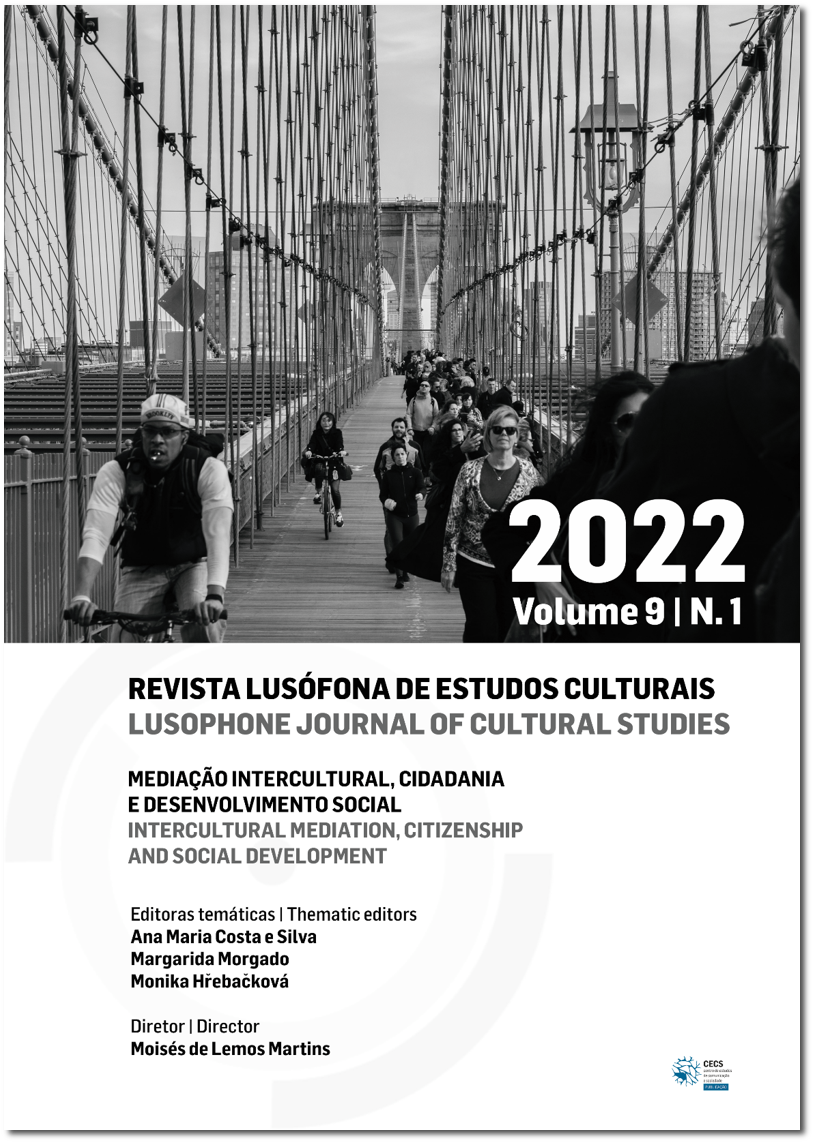Extended Body Versus Intercultural Body: Reflections on the Use of the Media and Interculturality
DOI:
https://doi.org/10.21814/rlec.3527Keywords:
media, extension, interculturalityAbstract
This article seeks to reflect on the relationship between the extension of perception, predicted by Marshall McLuhan’s media theory (1964/2016), and the organization of an intercultural society, based on the studies of authors such as Maria Aparecida Ferrari (2015), Lisette Weissmann (2018) and Natalia Ramos (2013). Starting from the concept of extension, as stated by McLuhan, that the media can expand the reach of the nervous system itself, it is intended to think of this extension of perception as a virtualized extension of the human body itself. Taking this premise, we seek to understand the consequences of this phenomenon in the constitution of a globalized culture. In other words, it seeks to answer the following question: is it enough for the body to be extended virtually by digital media to constitute a globalized and ethical society, or would an intercultural communication strategy be necessary for this to occur? Thus, it starts from the hypothesis that it is not enough for the body to be virtually extended by the media to organize itself as a globalized culture, but that an intercultural communication strategy would be necessary to develop a globalized culture, where exchanges information are balanced, and to develop an ethical relationship between different cultures. This reflection intends to prevent the globalized relationship between cultures from becoming another way of imposing ethnocentric cultural models. Therefore, it is believed that it is necessary to develop a globalized society that respects different cultures more than a body expanded by the media. In this way, it becomes necessary to develop an intercultural body so that it is possible to rescue otherness and society from its disappearance.
Downloads
References
Baitello, N. (2015). (A massa sem corpo), (o corpo sem massa), (a massa sem massa), (o corpo sem corpo. As redes sociais como ambientes de ausência (e fundamentalismos). In M. I. V. de Lopes & M. M. K. Kunsch (Eds.), Comunicação, cultura e mídias sociais (pp. 17–22). ECA-USP.
Dugnani, P. (2018). Globalização e desglobalização: Outro dilema da pós-modernidade. Revista Famecos, 25(2), 1–14. https://doi.org/10.15448/1980-3729.2018.2.27918 DOI: https://doi.org/10.15448/1980-3729.2018.2.27918
Ferrari, M. A. (2015). Comunicação intercultural: Perspectivas, dilemas e desafios. In C. P. Moura & M. A. Ferrari (Eds.), Comunicação, interculturalidade e organização: Faces e dimensões da contemporaneidade (pp. 43–63). EDIPUCRS.
Han, B.-C. (2015). Sociedade do cansaço (E. P. Giachini, Trad.). Vozes. (Trabalho original publicado em 2010)
Lipovetsky, G., & Serroy, J. (2015). A estetização do mundo: Viver na era do capitalismo artista (E. Brandão, Trad.). Companhia das Letras. (Trabalho original publicado em 2014)
Mcluhan, M. (2016). Os meios de comunicação como extensões do homem (D. Pignatari, Trad.). Editora Cultrix. (Trabalho original publicado em 1964)
Murdock, G. (2018). Refeudalização revisitada: A destruição da democracia deliberativa. Matrizes, 12(2), 13–31. https://doi.org/10.11606/issn.1982-8160.v12i2p13-31 DOI: https://doi.org/10.11606/issn.1982-8160.v12i2p13-31
Ramos, N. (2009). Diversidade cultural, educação e comunicação intercultural − Políticas e estratégias de promoção do diálogo intercultural. Revista Educação em Questão, 34(20), 9–32. https://periodicos.ufrn.br/educacaoemquestao/article/view/3941
Ramos, N. (2013). Interculturalidade(s) e mobilidade(s) no espaço europeu: Viver e comunicar entre culturas. In H. Pina, P. Remoaldo, & N. Ramos (Eds.), The overarching issues of the European space (pp. 343–360). Faculdade de Letras da Universidade do Porto.
Rosa, H. (2019). Aceleração: A transformação das estruturas temporais na modernidade (R. H. Silveira, Trad.). Editora Unesp. (Trabalho original publicado em 2005)
Santos, M. (2001). Por uma outra globalização. Record.
Weissmann, L. (2018). Multiculturalidade, transculturalidade, interculturalidade. Construção Psicopedagógica, 26(27), 21–36. http://pepsic.bvsalud.org/scielo.php?script=sci_arttext&pid=S1415-69542018000100004
Downloads
Published
How to Cite
Issue
Section
License
Copyright (c) 2022 Patricio Dugnani

This work is licensed under a Creative Commons Attribution 4.0 International License.
Authors own the copyright, providing the journal with the right of first publication. The work is licensed under a Creative Commons - Atribuição 4.0 Internacional License.












